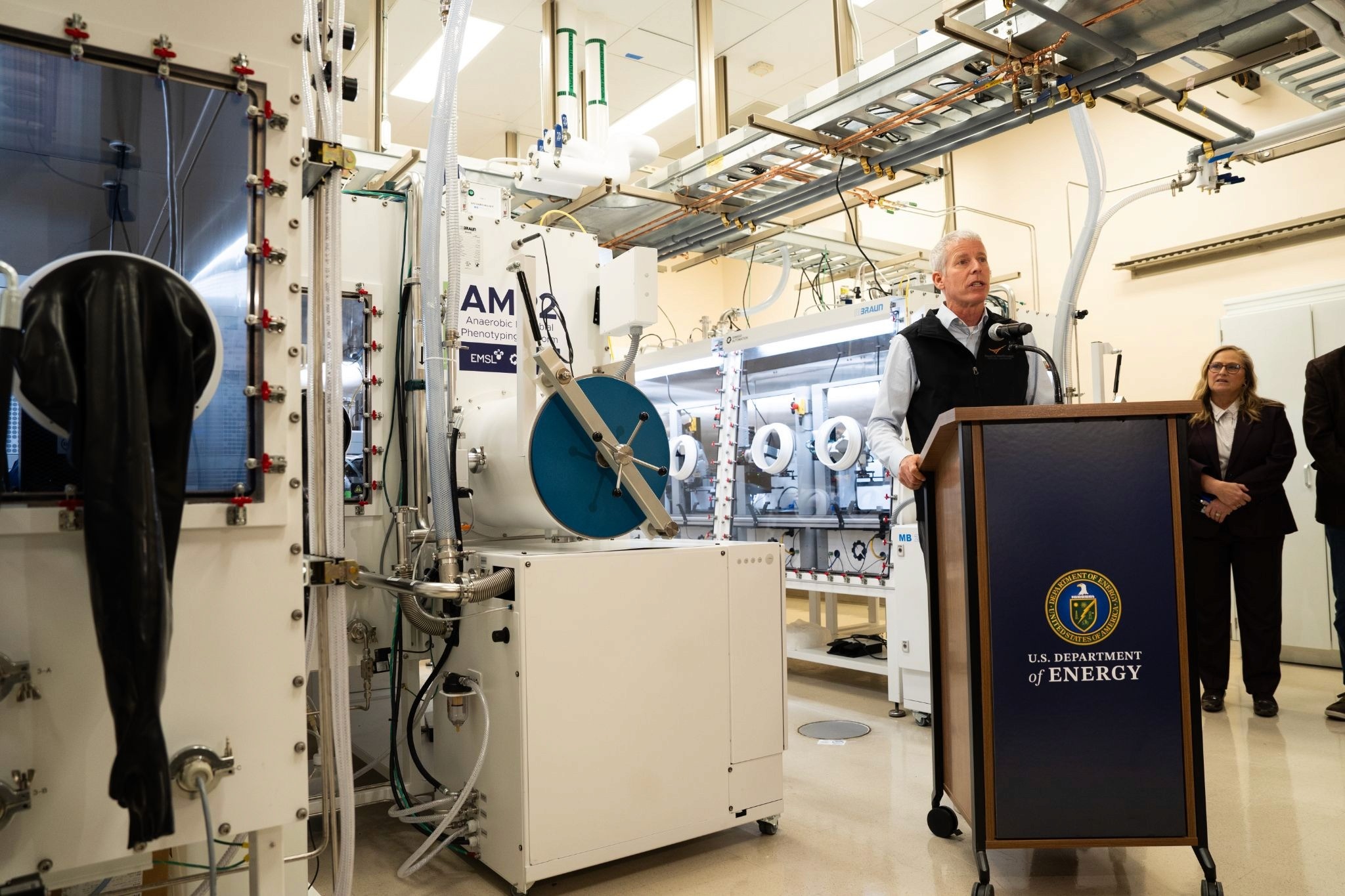OpenFold Consortium Unveils Preview OpenFold3: A Game-Changer for Protein Structure Prediction
The OpenFold Consortium has released OpenFold3, an open-source model that revolutionizes the prediction of protein structures, promising significant advancements in drug discovery and biomolecular research.
Oct 29, 2025
Image from NVIDIA.
The OpenFold Consortium, a prominent nonprofit organization in the field of artificial intelligence (AI) research, has introduced OpenFold3, a groundbreaking open-source deep learning model designed to accurately predict the three-dimensional structures of complex proteins and their interacting molecules. This model, trained on over 300,000 publicly available structures and a curated synthetic database of more than 13 million entries, is set to expedite in silico screening of biomolecules while laying the groundwork for next-generation protein AI tools crucial for drug discovery, enzyme design, biosensors, and biomaterials.
OpenFold3 utilizes a protein's amino acid sequence to predict its three-dimensional folding. The latest version marks a significant advancement with the ability to model protein structures in conjunction with other molecules, including small ligands and nucleic acids, which make up a major portion of existing pharmaceuticals. By enabling precise modeling of these interactions, OpenFold3 aims to foster rapid and cost-effective progress in drug discovery and materials science research and development. The model was developed by a collaboration of researchers from the AlQuraishi Lab at Columbia University, the Bioresilience Program at Lawrence Livermore National Laboratory, and the Steinegger Lab at Seoul National University.
“Democratizing state-of-the-art foundation models for biology is essential to unlocking their full potential in industry,” emphasized Woody Sherman, Chief Innovation Officer at Psivant Therapeutics and Chairperson of the OpenFold Consortium Executive Committee. He noted that engaging a global community of researchers across biotech, pharma, and academia is vital to addressing pressing real-world challenges and elevating the entire field.
One of the standout features of OpenFold3 is its Apache 2.0 licensing, which allows unrestricted access for users to test, train on new datasets, develop applications, and adapt the model—unlike AlphaFold3, which is restricted to limited academic use. “OpenFold3 brings all of this new functionality and makes it available to everyone,” stated Brian Weitzner, Director of Computational and Structural Biology at Outpace Bio and Co-founder of the OpenFold Consortium. He believes that the model's robust architecture will serve as a foundation for future protein AI tools.
“The launch of OpenFold3 embodies the sharing ethos of the OpenFold Consortium,” remarked Lucas Nivon, Co-Founder and CEO of Cyrus Biotechnology. He highlighted the consortium's goal of pooling resources across the industry to reduce redundancy in foundational model development. “Our goal is that OpenFold becomes the standard in academia and industry, similar to how Linux has functioned for tech,” he added. “This is just the beginning.”
OpenFold3's innovative features are particularly beneficial in biopharma, where proteins play a crucial role. The model can predict co-folding, such as the conformation of a protein when bound to a drug, and can be integrated into protein design workflows using tools like ProteinMPNN. Major companies like Novo Nordisk and Bayer Crop Science have already committed to using OpenFold3 to enhance their research and development efforts. “Being able to predict the structure of a ligand bound to its target has broad implications across the R&D value chain,” noted Peter Clark, Vice President of Digital Chemistry & Molecular Design at Novo Nordisk.
“OpenFold3 allows us to fine-tune the model with internal data to accelerate discovery pipelines across our Crop Science and Pharmaceutical Divisions,” stated Christina Taylor, Senior Science Fellow at Bayer Crop Science. She emphasized how the model's open-source nature enables innovation and collaboration across the field.
Built on PyTorch, OpenFold3 is designed for high-speed performance and efficient resource use, making it suitable for large-scale applications. “With OpenFold3, we’re making biomolecular modeling adaptable and extensible,” said Nazim Bouatta, scientific co-leader of OpenFold3. The model's modularity allows for easy integration into various workflows, reducing barriers for researchers.
“This unparalleled flexibility further lowers the barrier to entry and will greatly accelerate adoption without overburdening data scientists or straining IT teams,” added Mohammed AlQuraishi, Assistant Professor of Systems Biology at Columbia University. Jennifer Wei, the technical co-leader, expressed excitement about the model's design, which allows it to be directly incorporated into projects by both industry and academic researchers.
The OpenFold Consortium is collaborating with initiatives like OpenBind and the AI Structural Biology Network to further enhance OpenFold3's capabilities. “By democratizing access to cutting-edge AI technologies, tools, and data, OpenFold is helping disrupt and transform traditional drug discovery and materials science processes,” highlighted Andrea Bortolato, VP of Drug Discovery at SandboxAQ.
The development of OpenFold3 has been supported by contributions from consortium members, including funding, computational resources, and scientific expertise. “The OpenFold 3 development exemplifies how Amazon Web Services (AWS) high-performance computing Cloud infrastructure and generative AI model development platforms enable cutting-edge data science,” remarked Dr. Boris Bogdan, Director of Life Sciences at AWS.
For more details on the OpenFold Consortium and its initiatives, visit openfold.io. The preview of OpenFold3 code is available on GitHub, with additional resources accessible through various consortium partners.


















